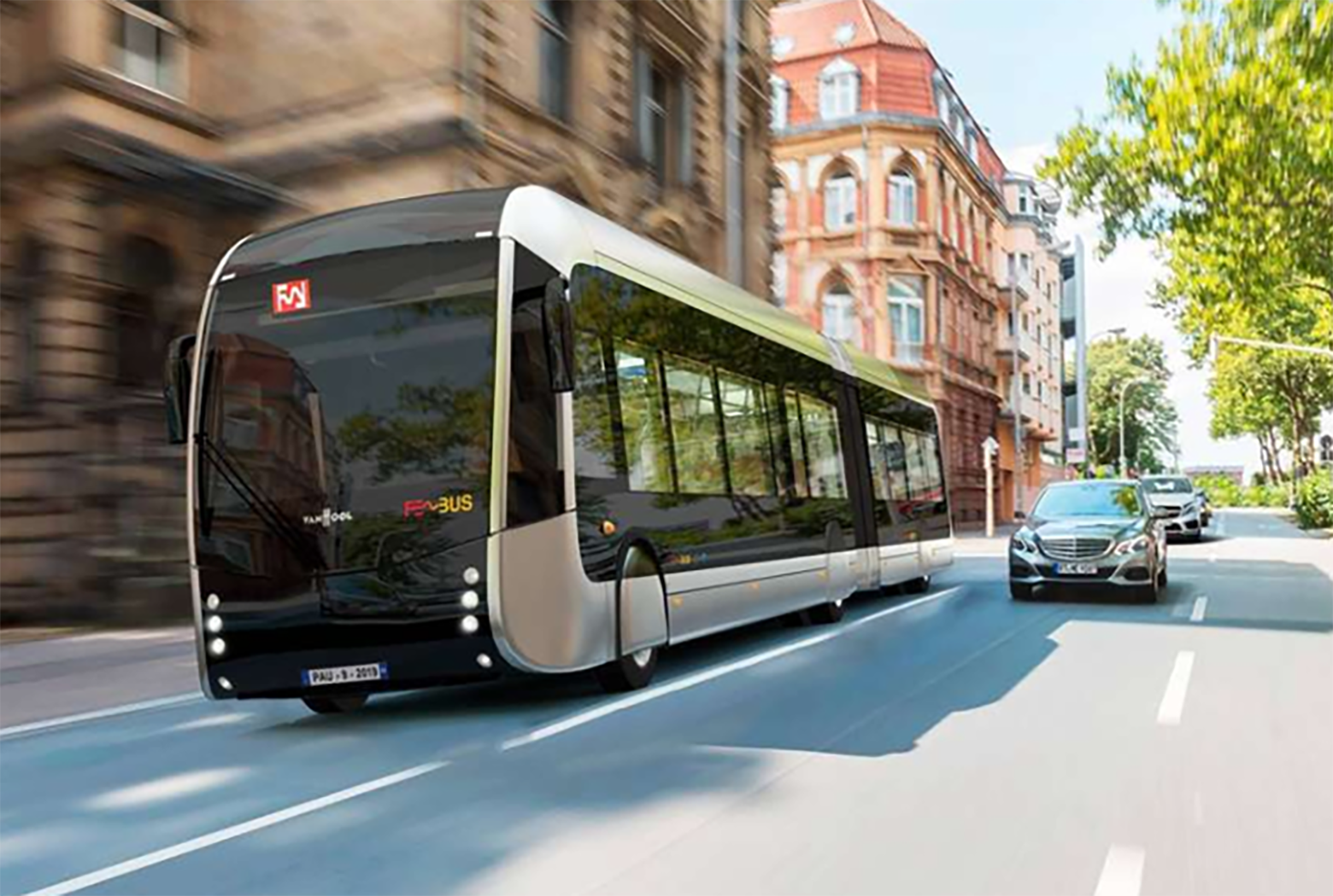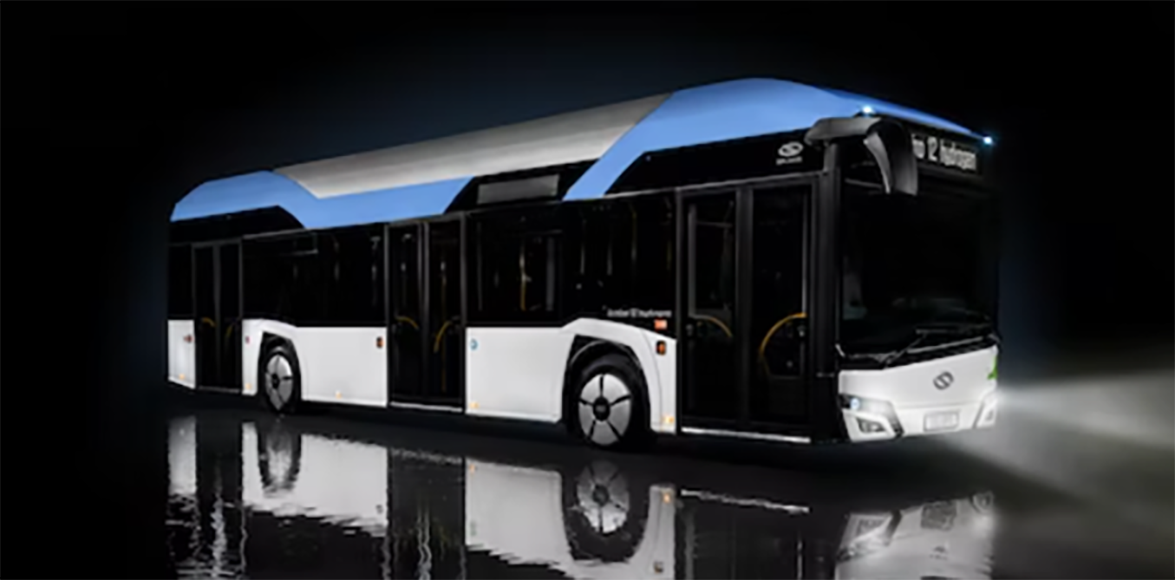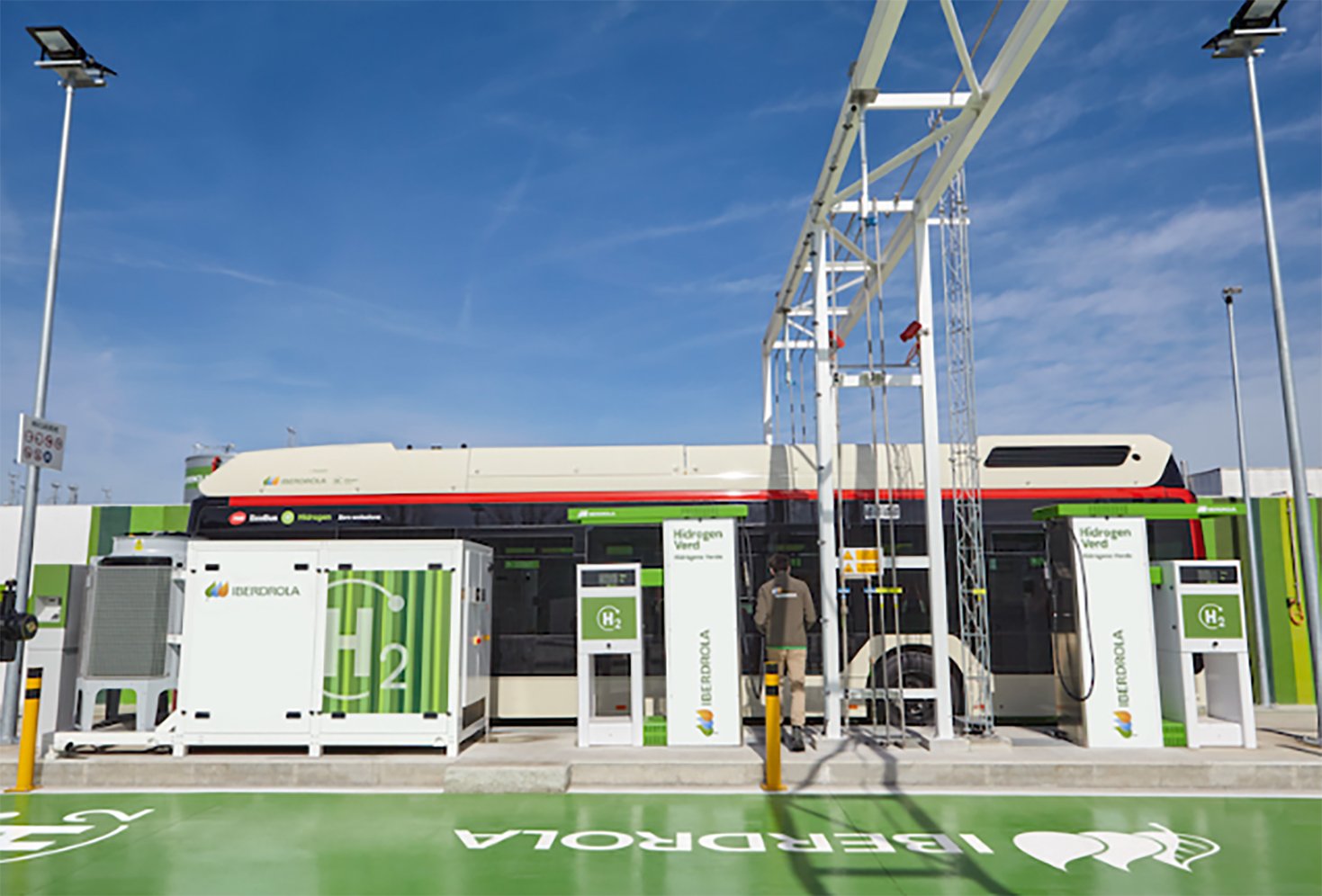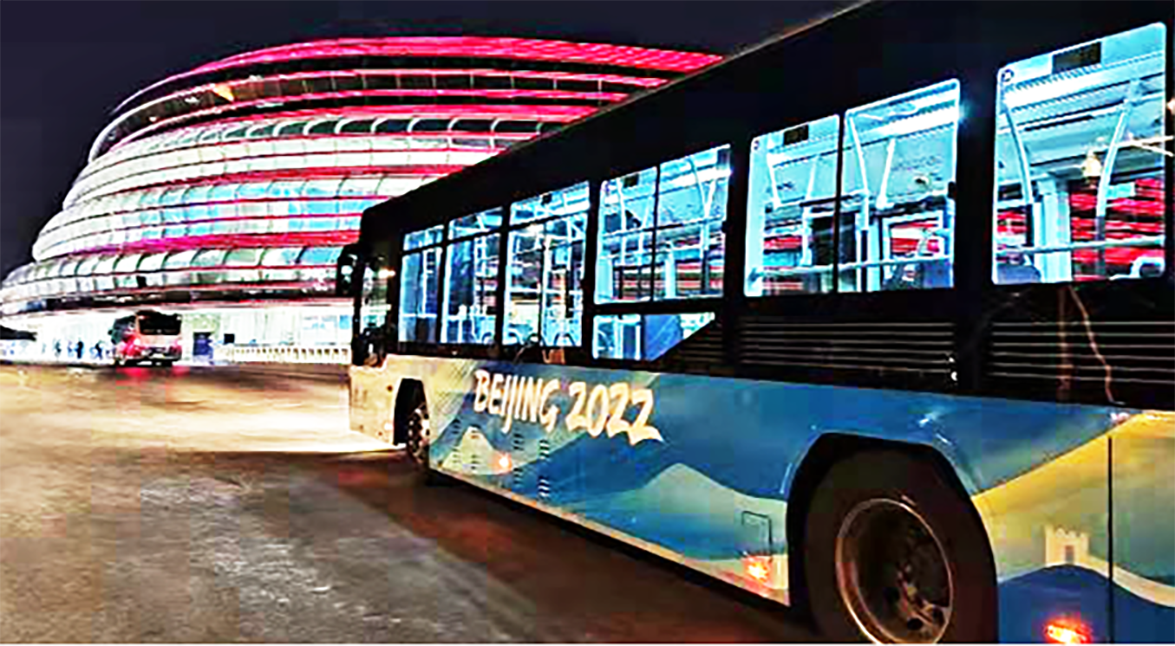City buses: Emission-free by 2030
The European Commission, as part of its ambitious new CO2 emission targets for new heavy duty vehicles (HDVs), proposes that all new city buses shall be zero-emission from 2030.
As we can read in the long-awaited report by the Chatrou CME Solutions consultancy, new orders for electric buses experienced an unprecedented growth in 2022 driven partly by robust EU incentives, political pressures and cost savings. Now, with plenty of money in the pipeline, these purchases will continue. The battery-electric bus technology is clearly leading the way, far outpacing the hydrogen fuel-cell technology. By 2022, about 3,505 battery-electric buses were sold in operation — or soon to be in operation — compared to only 99 hydrogen fuel-cell varieties (158 in 2021). Cost is perhaps the most decisive factor for transit agencies when choosing a technology.
Hydrogen-powered buses offer a host of additional advantages over battery electric buses, including range, speed of fueling, elimination of heavy battery resulting in an increased number of passenger seats and more stable performance in fluctuating temperatures.

Image 1 – FC bus of Van Hool
Hydrogen fuel-cell vehicles benefit from being able to travel longer distances than battery-electric vehicles, making them good candidates for the medium- and heavy-duty vehicle sector, as well as maritime and aviation. However, battery range technology keeps improving, thus making the battery bus a feasible solution for most transit uses. Other factors that come into play include refueling infrastructure, facilities, access to hydrogen, as well as energy cost.
The battery-electric vehicles will require, at a minimum, on-site charging capability where the vehicles are garaged and may also require on-route charging. The fuel cell also requires the ability to fuel on-site, which may or may not require the construction of supporting facilities and/or the provision of hydrogen fueling.
FC Bus technical specifications
Focus on the technical specs, fuel cell buses like SOLARIS URBINO FC (Spanish group CAF) are a zero-emission bus that combines a high-performance small battery with a fuel cell which powers the battery. The Urbino 12 hydrogen is fueled with power generated by a 70-kW fuel cell and electric axle with two 125 kW motors. The fuel cell will be supported by a Solaris High Power battery (based on LTO) with a capacity of 30 kWh during periods of high electricity demand, with two batteries installed on the longer buses (18 m).
Five hydrogen tanks (type IV, 350 bar) mounted on the roof and located longitudinally above the vehicle first axle, ensure a capacity of 312 liters each, i.e. 1,560 liters totally, equal to approximately 37 kg. Refueling follows a rate of 6 kg per minute for a total time necessary to fill up the tank of just over six minutes. Of course, this time also depends on the technological level of the refueling system. The refill nozzle is located on the right side, close to the front door. The bus has a range of around 350 kilometers, accordind to the manufacturer.
The bus is characterised especially by a low level of noise and lack of vibrations while moving, points out the manufacturer. Furthermore, the only product of the chemical reaction which takes place in the hydrogen fuel cell is water. The refilling time is only a couple of minutes, which will ensure flexibility and elasticity to the vehicle’s operator.

Image 2 – Solaris Urbino 12 Hydrogen
The internal lighting is full LED. The air conditioning is controlled by a system characterised by the use of CO2 refrigerant and heat pump. The system uses the residual heat of the fuel cell to heat the passenger area. Noteworthy is the cockpit, which is entirely digital and equipped with touchscreen technology, as usual in the new generation of Solaris buses. The interior of the vehicles will feature air conditioning, a passenger communication system, and an automatic passenger counting system. There will also be space for a wheelchair and a pram or bike and USB ports for mobile device charging. The buses will be equipped with advanced systems such as cameras instead of mirrors and the MobileEye Shield+ system to detect unexpected objects around the bus. Solaris will provide continuous servicing of the vehicles through its eSConnect fleet monitoring and management system.
Spain
Iberdrola inaugurated the first hydrogen generator for urban buses powered by hydrogen in April 2022. It is the first Hydro Generator for public and commercial use to supply green hydrogen in Spain. It occupies 5,000 m2 in the Zona Franca industrial estate in Barcelona, near the port and the airport, and it was built in less than 12 months. There are 6 units of the Barcelona municipal transport company (TMB) powered by hydrogen at the moment, 1 in operation and 5 in the mechanical testing phase, but a total of 60 buses are by 2025 or 2026.
The selected buses are from Caetano Toyota H2 City Gold LHD, 12 meters long, light aluminum body, 60 kW nominal power and five tanks to store 37.5 kg of H2. This feeds the fuel cells to generate the energy that in turn drives the electric motor (180 kW of power). They refuel between 30 and 37.5 kg, with a range of around 430 km.

Image 3 – TMB HRS built by Iberdrola for H2 buses
On March 10th, the Municipal Transport Company (EMT) of Palma de Mallorca presented the first three green hydrogen buses in the Balearic capital to join its rolling fleet. The company thus becomes the first customer of the green hydrogen plant in Lloseta, Mallorca, the first renewable hydrogen industrial facility in Spain. This initiative is part of the ‘Power to Green Hydrogen Mallorca’ project, led by Acciona Energía and Enagás Renovable. In addition, the Municipal Transport Company of Madrid has begun this week with the works of the hydrogenerator that will serve a fleet of 10 FC buses by 2024.
Germany
The German hydrogen bus market is expected to contribute substantially towards European leadership on a global scale. Interestingly enough, in 2022 Solaris supplied for the first time more fuel cell buses than battery-electric buses in the country (28 BEV and 42 FCEV). RVK has the largest fleet of hydrogen-powered Solaris buses in Europe. Düsseldorf has set the goal of becoming climate neutral by 2035. To this end, the city’s public utilities company Stadtwerke Düsseldorf and the public transportation company Rheinbahn are investing in hydrogen technology and battery-electric mobility.
The German transport company Stadtwerke Aschaffenburg Verkehrs GmbH turned to Solaris with an order for 12 fuel cell buses: 10 Urbino 12 hydrogen units and 2 Urbino 18 hydrogen buses, which will operate in the Lower Franconia region. This order marks Solaris’ first for the 18-meter hydrogen-powered buses, which were launched in autumn 2022. The Urbino 12 hydrogen buses have already been ordered in quantities exceeding 200 units, with 100 vehicles already operating in cities such as Bolzano in Italy, Cologne and Wuppertal in Germany, South Holland in the Netherlands, and Konin in Poland.
Italy
The tender for the purchase of 127 fuel cell buses in the Bologna and Ferrara area (with an option for further 140 vehicles) has been published in the Official Journal of the European Union. Municipal operator TPER, in agreement with the Municipality and Metropolitan City of Bologna, aims to achieve zero emissions in the Bologna urban area by 2030, twenty years ahead of the target set by the European Union for 2050.
The plans for the tender were announced in December 2022. In view of this deployment of hydrogen vehicles, the German Wolftank group has been selected by TPER as operational-industrial partner for TPH2. The consortium will be in charge of creating an integrated hydrogen fueling system for buses.
The supply of fuel cell buses for TPER Bologna will be carried out in stages, with 34 buses for Bologna and 3 for Ferrara to be delivered by 2024, and the remaining buses in June 2026.
Asia
In China, the Beijing Winter Olympics 2022 witnessed the circulation of more than 800 hydrogen fuel cell buses. The rising production and sales of hydrogen buses in the country are predicted to catalyse market growth”, according to Future Market Insights. Also in Asia, the increasing operation of eco-friendly hydrogen-powered buses in South Korea is stimulating the market growth in the country. Moreover, increasing government initiatives to promote the adoption of hydrogen buses are also enhancing the market scope of these buses.

Image 4 – Hydrogen buses in Beijing 2022 Olympic Games
The South Korean city of Incheon, located near the capital Seoul, plans to introduce a total of 700 hydrogen fuel cell (H2) buses on the roads by the end of 2024. A total of 200 of these H2 buses will be put into operation this year, and the remaining next year.
Hyundai will supply the vehicles and energy specialist SK E&S, which belongs to the SK Group, will install hydrogen refueling stations for the buses and provide liquid hydrogen. The ministries involved are subsidising the initiative and have promised regulatory improvements to facilitate the use of fuel cell buses. There are currently six hydrogen fueling stations in Incheon: the goal is to build eight more this year.
Conclusions
A hydrogen-powered bus has many additional operational advantages over a battery-powered bus, including greater vehicle autonomy for long routes, shorter refueling times (4-5 minutes), good behavior in extreme temperatures and winding routes, or eliminating the high payload that heavy batteries imply, increasing the number of passengers and luggage that can be transported. Renewable hydrogen is currently expensive, and recharging infrastructures require a high initial investment to fully utilise this technology.
In the future, batteries and hydrogen will coexist, driven by the ever-lowering prices of renewable energies and the increasing scalability of hydrogen production and refueling infrastructures. Although bus prices and maintenance costs are similar, hydrogen offers operational advantages for captive bus fleets, especially for long routes, which will exponentially increase the use of this technology in city buses.
SynerHy, powering net zero!